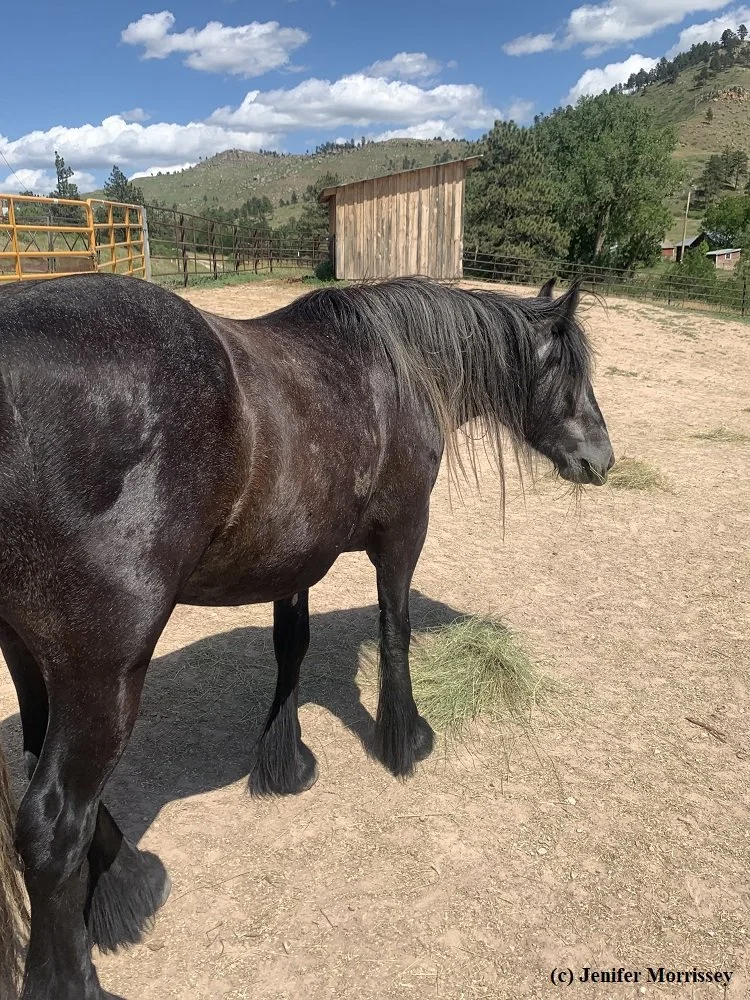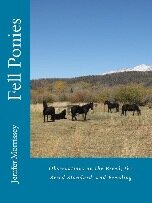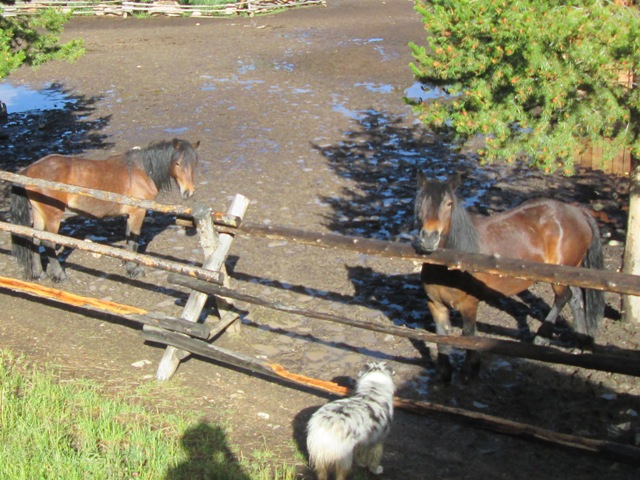One advantage of visitors is that the ponies go to them so I have a chance for a decent photograph instead of a nose-filled lens. The best kind of visitors, in addition to enjoying being with the ponies and allowing me to take pictures, is the kind that asks lots of questions. It was a blessing to have our most recent visitors here for that reason. A little trick about ears-forward in photos was a definite bonus as well!
These visitors had never seen a Fell Pony in person before and were keen to follow me about as I did chores and meet each pony in turn. I appreciated the questions about what purpose each supplement I put in the ponies’ feed serves, what the difference is between short backs and short coupling, and the many colors of the breed. I appreciated their observations about good bone and the subtle differences in conformation between three half-sisters. It was helpful in our conversation to be able to point out which ponies were full grown and which weren’t yet. One question, though, gave me pause. In the end, that’s always the best kind of question because it means it’s one I haven’t answered before so it makes me think.
When my visitors learned that in addition to a herd of Fell Ponies that I also have a Norwegian Fjord Horse, they asked me how the temperament of a Fell differs from a Fjord. My answer after some thought was that Fells seem to like people somewhat more than Fjords do. After my visitors left, though, I’ve pondered that answer and realized there’s a lot more to that answer than I first communicated.
When with my visitors, I of course first answered with this caveat that is true regardless of breed comparisons: there is more variation within a breed than between breeds. In the few days since my visitors were here, I’ve realized that while I still think it’s true that Fells like people more than Fjords do, that’s a possibly deceptive answer. For instance, I have a Shetland-Welsh pony that isn’t as friendly as my Fells, but she’s the hardest worker I’ve had in harness and when in her working years she would try just about anything I asked of her. My Fjord horse is similar.
Fells, I think, like people because they like to be mentally stimulated, and they can get that from their interactions with people. I received an email from a Fell Pony owner after my visitors were here that helped me think about this characteristic of Fells. The owner had had years of frustration with their pony and they had almost given up on it. But when it turned eight, it settled down to being the type of pony they had always hoped they had purchased.
These ponies will play games, sometimes to the frustration of their owners and trainers. They will seek openings to outsmart their human when we’re not paying attention (a mare slipped out a gate when my husband had his back turned to her, for instance). They will swat you with their tail or bump you with their shoulder when you walk by, just to show they can. They will change direction or gait in an instant under saddle when they want to but will brace when asked by their rider to do the same. They will do all these things until and unless they are satisfied with their relationship with you.
On the other hand, they will take you on magical trail rides or do dressage or play a unicorn. They will trot up to you when they see you and ask to interact. They will communicate very clearly, though just through the twinkle in their eye, that they are pregnant. They will be foot-perfect carrying a child on a first ride. They will do whatever you ask and offer helpful things as long as they deem the relationship with you worth it.
So once again I’m thankful to have had visitors here at Willowtrail Farm and the best kind of visitors at that. They persevered in finding us, which was a good sign, and then the questions they asked helped me think about Fell Ponies in new ways. I came to appreciate my ponies all the more, despite the occasional tail swipe across the face. Best of all, I realized once again that my life with them is a blessing.
© Jenifer Morrissey, 2018


















